Article: Japanese Giant Salamanders by Don Silcock
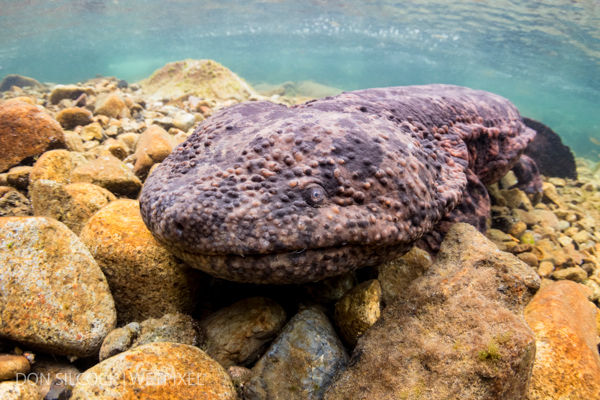
The Japanese Giant Salamander
By Don Silcock
The Japanese giant salamander is an interesting creature that lives in rivers across western and south-western Japan.
As its common and Latin names (Andrias japonicus) suggest, they are an endemic species of Japan that are both protected under federal legislation, and formally nominated as a special natural monument, because of their cultural and educational significance.
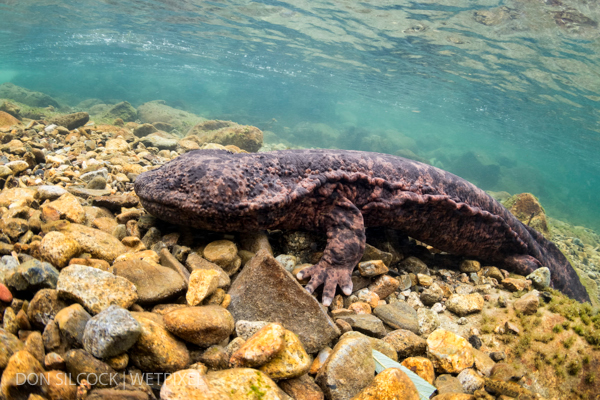
The Japanese giant salamander is indeed quite large, reaching up to 1.5m in length and 25kg in weight, which together with their large mouth and rather strange features gives them a fairly formidable presence – at least when you first come face to face with them! They have a quite amazing ability to burrow down in to the rocks of the river beds – which they do head-first and given their overall size really does make you wonder how they turn around down there, because when they do re-emerge they are face-first…
The Japanese giant salamander is actually the second largest salamander in the world and the prize for the biggest goes to the closely related Chinese giant salamander, which can reach 1.8m in length and up to 50kg in weight!
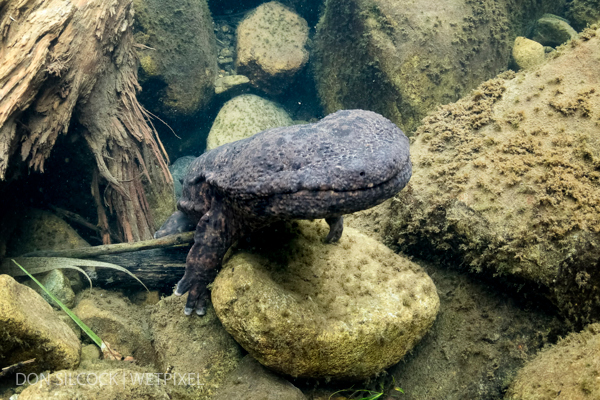
Critically endangered in China, the Chinese salamander was introduced in to Japan for commercial reasons in the early 1970’s and now poses a threat to the Japanese version as the two species are known to mate, creating a hybrid variant…
The Chinese giant salamander has a reputation locally as being much more aggressive that its Japanese cousin, which is distinctly sloth-like when observed during daylight hours.
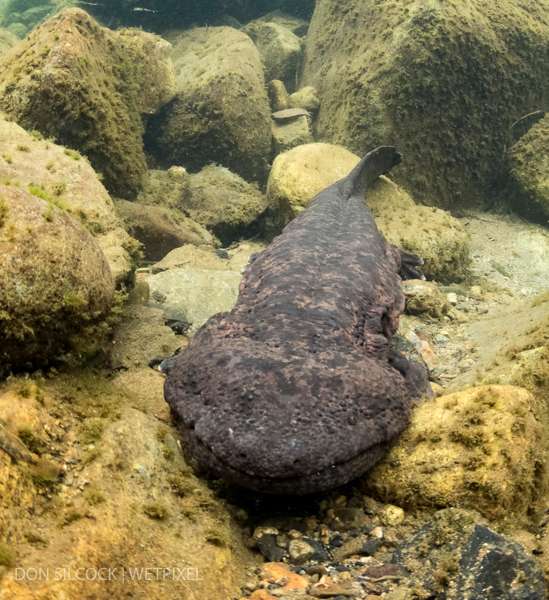
That behaviour is because the Japanese giant salamander is nocturnal and, because they lose their gills when they are very young, they must interrupt their daytime slumbers to obtain air.
Either they do that by rising to the surface or in rapidly flowing water, which is highly oxygenated, they can absorb it through their skin.
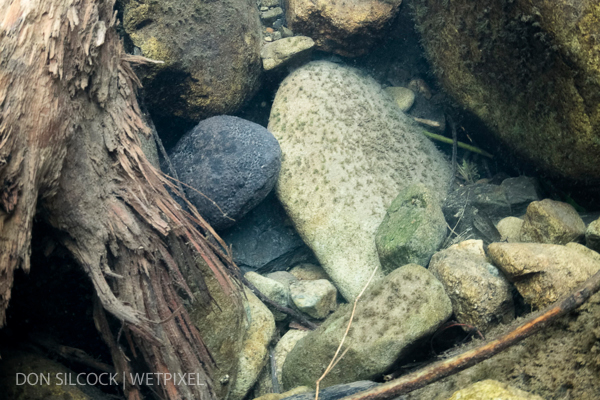
Being in the water with these creatures is an interesting experience with fairly long periods of inactivity while they slumber down in the river bed rocks and you wait patiently for something to happen as you float on the surface breathing through your snorkel.
Typically, a salamander breathing cycle is about 30 minutes and looking at rocks while you wait is not exactly exciting… Then you notice a rock that was not there the last time you looked, but it’s not a rock – it just looks like one and it’s the salamander starting to re-emerge!

What follows then is typically a slow and cautious crawl up the rocks, followed by a quick dash to the surface and a scramble back down in to the riverbed!
Photographing the Japanese Giant Salamander
Photographing the Japanese giant salamander can be a little challenging because they are nocturnal creatures that are quite timid during the daylight hours you are with them.
They are also very well camouflaged with their brown and black mottled skin and they blend in extremely well against the river bottom plus, as they spend a significant amount of time burrowed in to the river bed, you have to know where to look for them – which means that a guide is essential!
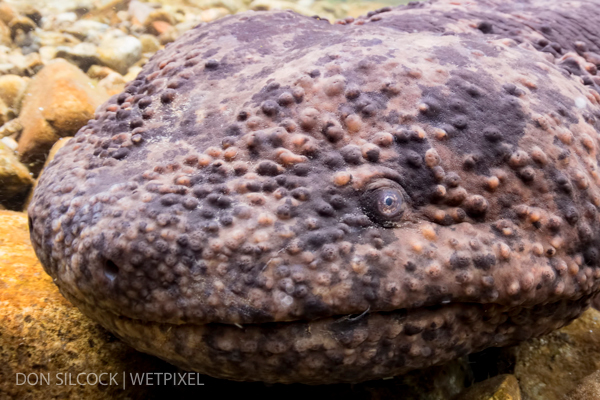
The salamanders have small eyes with poor vision and are very sensitive to light, so there is no way to use strobe lighting without harming the creatures – therefore natural light and a higher ISO than you might normally use is the only option.
They are also quite large animals and so a wide-angle lens is the way to go and I personally used the very versatile Tokina 10-17mm lens with my Nikon D500 and Nauticam housing.
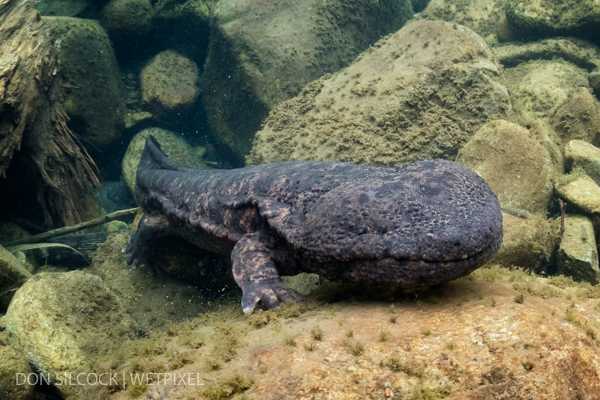
Because they are nocturnal (when they feed on insects, frogs and fish) during the day they are almost slothful in nature apart from when they rise to the surface to get air – when they move quite quickly, probably because they are most vulnerable then.
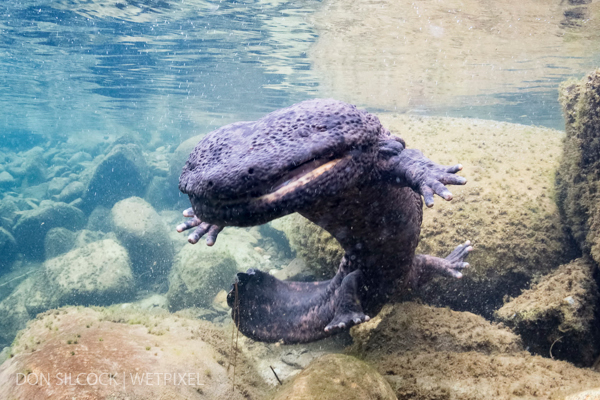
I think the mid-water shots of the salamanders are the most interesting, as they seem to bear more than a passing resemblance to ET at that moment – but you have to be quick, as they do not linger…
They need to take air about every 30 minutes and the cycle I got in to during the two days I spent with the salamanders was roughly 25 minutes of rock-watching. Which was followed by a few minutes of cautious movement as they first start to emerge from the river bed, and then about a minute of hurried activity when they rise to the surface, take their air and return from where they came!
The salamanders do not like you approaching as they emerge from the riverbed and if you get too close will start to either retreat or shoot off in another direction – so you really are better of backing away a little and being less intimidating.
If you are patient and have a touch of luck you may encounter one of the salamanders out in the open and if you do then all of your stalking skills will be required to carefully approach – but taking your time can get you close enough to get some nice close-ups of these most interesting creatures!
Where to see the Japanese Giant Salamander
Well the first thing you will need is a guide, because without one your chances are almost zero… Not only that, but they live in rivers in rural Japan where almost nobody speaks any English, or any other language come to that and so you need a Japanese guide!
For my trip I was very fortunate to be helped by my diving buddy Martin, who lives in Tokyo and is fluent in Japanese having grown up with an American father and a Japanese mother. Martin put me in touch with Yoshihiro Ito, who is the Japanese “salamander whisperer” and one of the nicest people you could hope to meet!
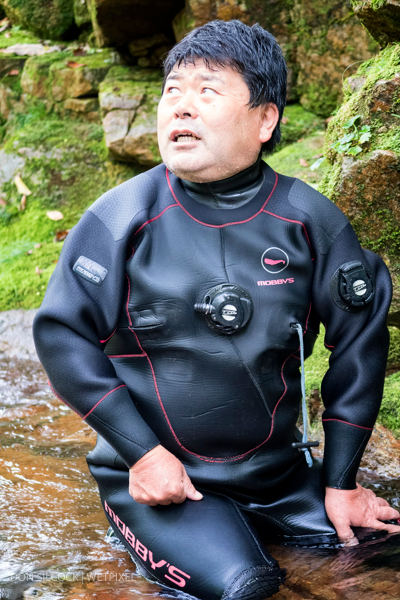
Ito san turned a life-long obsession with the wildlife of Japan in to his full-time occupation a few years ago – giving up a good job as a sales manager in the process!
To see the giant salamanders we had to to to the city of Gifu, the capital of Gifu Prefecture in the Chūbu region of central Japan – which required a journey of just over two hours on the excellent Shinkansen bullet train from Shinagawa station in downtown Tokyo.
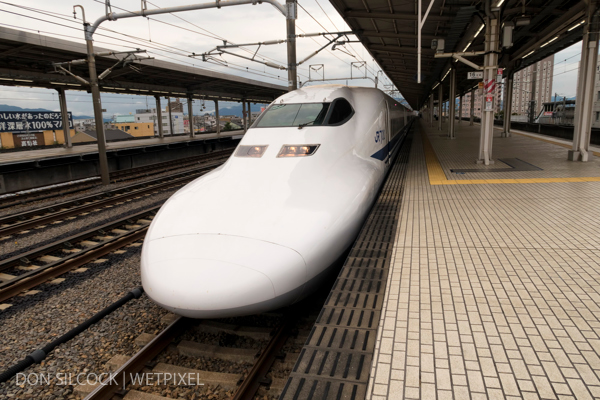
Ito san met us at Gifu station and drove us up in to the mountains and the small village of Wara, where he knows all the spots the Japanese giant salamanders burrow down in to the rocks in the riverbed of the local river.
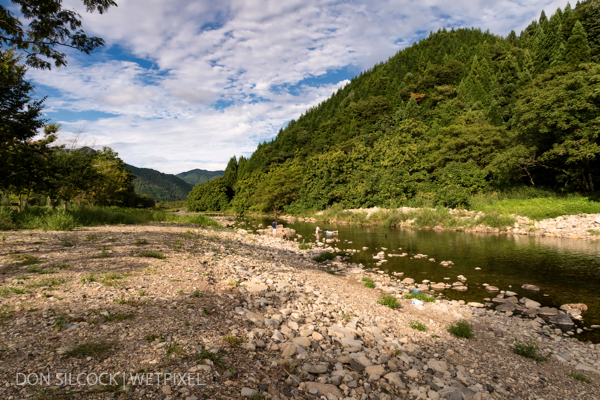
Once kitted up in dry suits (the water is cold…) Ito san guided Martin and I to the best spots and we began our routines of watching rocks for about 25 minutes and then a few minutes of intense activity as the salamanders came up for air!

We spent two days around Wara and the on the third day Ito san took us to another river where he knew to find the regular “baby size” salamanders.
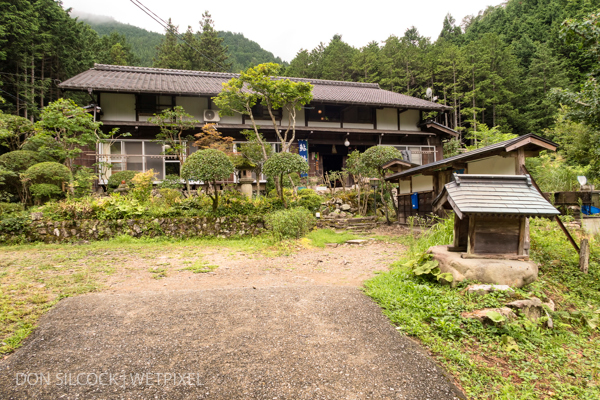
For me the opportunity to stay in a local Ryokan style country inn was nearly as good as the experience with the salamanders… It has been on my “to do” list for many years, but as my Japanese is limited to asking for a beer and saying thank you, it was just too hard to do – but traveling with Martin and Ito san made it all happen!

We ate Japanese style in the inn’s dining room with other travellers who were passing through the area and it was just great.
When to Go?
The very best time to see the Japanese giant salamanders is during their mating season in late August when the sexually mature adults migrate up stream into the mountains to spawn and lay their eggs in “dens”.
The larger males guard those dens and are known as “denmasters” and will mate with numerous females during the season, while smaller males will often to sneak in to the dens and fertilize the eggs.
How To Do It?
You have two options and both involve Ito san…
You can go direct to him, but do not expect perfect communication as his English is not fluent, however you can absolutely rely on him to do everything possible to make sure you have a good trip.
Ito san can be contacted via email.
Don Silcock
For more information and insight on the Japanese Giant Salamanders, plus extensive location guides, articles and images on some of the best diving locations in the Indo-Pacific region, check out Don’s website.